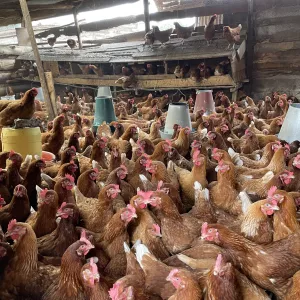Celebrating World Antimicrobial Awareness Week 2022 with highlights of ILRI research on antimicrobial resistance
World Antimicrobial Awareness Week is marked annually from 18 to 24 November to raise global awareness on antimicrobial resistance and encourage rational use of antimicrobials to reduce further emergence and spread of antimicrobial resistance. Antimicrobial resistance occurs when bacteria, viruses, fungi and parasites change over time and no longer respond to medicines, making infections harder to treat and increasing the

Celebrating World Antimicrobial Awareness Week 2022 with highlights of ILRI research on antimicrobial resistance
World Antimicrobial Awareness Week is marked annually from 18 to 24 November to raise global awareness on antimicrobial resistance and encourage rational use of antimicrobials to reduce further emergence and spread of antimicrobial resistance.
Antimicrobial resistance occurs when bacteria, viruses, fungi and parasites change over time and no longer respond to medicines, making infections harder to treat and increasing the risk of disease spread, severe illness and death.
Antimicrobial resistance is currently one of the biggest threats to global public health. Researchers have estimated that bacterial antimicrobial resistance caused 1.2 million deaths in 2019.
Two-thirds of the global increase in antimicrobial use is from the agricultural sector. Rational use of animal health products, particularly antibiotics, should therefore be promoted as one of the strategies to reduce the spread of antimicrobial resistance.
The Animal and Human Health program of the International Livestock Research Institute (ILRI) seeks to effectively manage or eliminate livestock, zoonotic and foodborne diseases that matter to the poor through the generation and use of knowledge, technologies and products, leading to higher farmer incomes and better health and nutrition for consumers and livestock.
Our research approach to improving flock and herd health in smallholder systems promotes the rational use of antibiotics. To this end, we work with national, regional and international partners to carry out research on antimicrobial resistance at the human–livestock interface.
To celebrate World Antimicrobial Awareness Week 2022, under the theme Preventing Antimicrobial Resistance Together, we feature a curated selection of recent research outputs on antimicrobial resistance authored and co-authored by scientists from ILRI’s Animal and Human Health program.
Photo credit: Chickens on a poultry farm in Kiambu County, Kenya (ILRI/Hung Nguyen-Viet)

